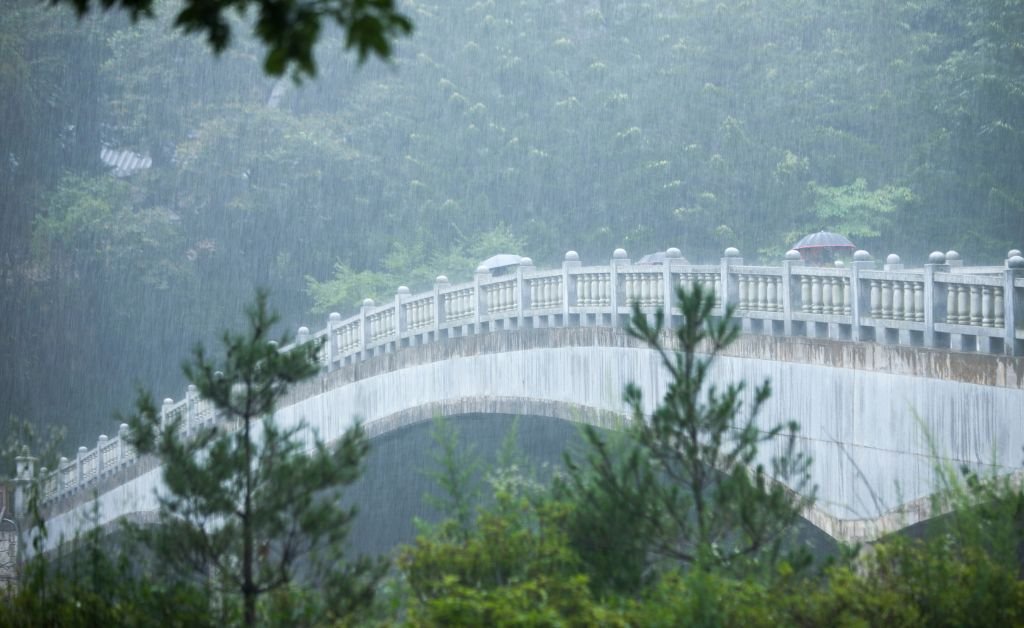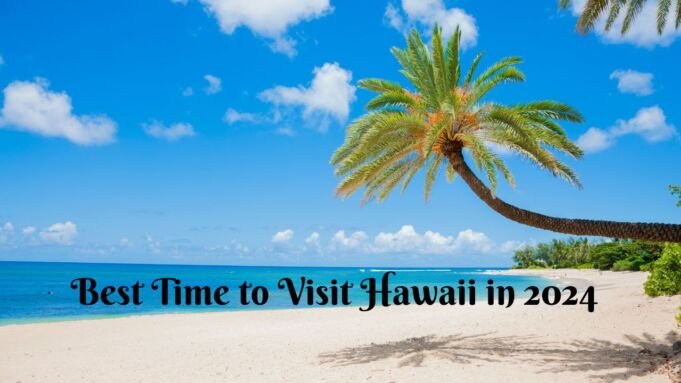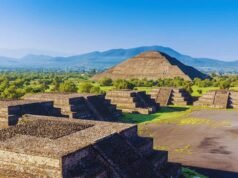Are you planning to visit Hawaii soon? Before you book your tickets and pack your bags, you need to know the best time to go. Hawaii is a beautiful place to visit any time of the year, but there are certain times when it’s better to go than others. In this blog post, I’ll be discussing the worst time to travel to Hawaii and why it’s important to avoid these months.
By the end of this blog post, you’ll know exactly when to avoid traveling to Hawaii and why. I’ll also provide tips on how to make the most of your trip, no matter when you decide to go. So, if you’re planning a trip to Hawaii, keep reading to find out when you should avoid going and why.
When is The Worst Time to Visit Hawaii?
To avoid potential problems that could spoil your vacation, it’s critical to know the worst time to visit Hawaii if you’re planning a trip there. The winter months of November through March are the worst times to travel to Hawaii. Even though it’s still warm outside, this is known as the rainy season because of how unpredictable and wet the weather can be.
December is typically the rainiest month in Hawaii, so if you want to avoid the rain, it’s best to plan your trip for another time. Wet weather can also lead to flash floods, landslides, and other dangerous conditions, so it’s essential to be aware of the weather forecast and any warnings issued by local authorities.
When is The Best Time to Visit Hawaii?
When is the best time to visit Hawaii if you plan a trip there? The response depends on what you’re looking for.
April and May are excellent late spring travel months to Hawaii if you want to take advantage of the best weather without dealing with crowds and peak rates at hotels and resorts. These months fall just after the busy spring break season, so you can expect quieter beaches and easier access to popular spots. It’s a great time to visit places like Waimea Canyon, the Na Pali Coast, and some of the top attractions in Kilauea, Kauai, where scenic landscapes and unique cultural sites offer memorable experiences away from the busier tourist hubs.
The best time to visit Hawaii for the most ideal overall weather, lowest statewide rates, and the fewest visitors on-island is April and May during the spring and September and October during the fall. Some refer to these times as Hawaii’s “off-season period” or “shoulder months.” Hawaii Guide suggests these months as the best time to visit Hawaii.
Generally, the best weather in Hawaii is in June, July, and September. This is when travelers can expect the least amount of rain, along with warmer water temperatures. Hawaii isn’t an actual four-season state; it has great weather year-round. The Points Guy suggests that the best time to visit Hawaii for good weather and smaller crowds is June, July, and September.
Best Times to Visit Hawaii for Smaller Crowds
The ideal time to visit Hawaii is during the months when classes are in session if you want to avoid the crowds. Some of the greatest times to visit Hawaii to avoid the crowds are in May, September, and October. You can anticipate shorter lines and fewer tourists at popular attractions during these months.
Another way to avoid crowds is to skip the peak travel season, which typically runs from mid-December to mid-April. This is when many people travel to Hawaii to escape the cold winter weather in other parts of the world. Plan your trip outside of this peak season to enjoy a more peaceful and less crowded vacation.
Remember that even during the off-season, some popular attractions may still be crowded, especially during weekends and holidays. To avoid the crowds, consider visiting these attractions early in the morning or later in the afternoon.
Best Times to Visit Hawaii for Good Weather

The best time to visit Hawaii if you want to take advantage of the nice weather is between April and October. You may anticipate pleasant, warm weather during these months, with highs between 71°F and 88°F. These are the ideal months to take advantage of bright days and see the stunning blooms all over the islands.
June, July, and September have the best weather in Hawaii. During these months, travelers can expect the least amount of rain, along with warmer water temperatures. However, Hawaii has great weather year-round, so you can visit anytime and have an enjoyable trip.
If you want to avoid crowds and peak pricing at hotels and resorts, the late spring months of April and May are a great time to visit Hawaii. These months are after spring break has come and gone, and you can take advantage of the great Hawaii weather.
Best Time for Exploring the Outdoors in Hawaii
Finding the ideal time to visit Hawaii is crucial if you want to take advantage of the state’s outdoor attractions while you’re there. In Hawaii, April through October are the ideal months for outdoor activities. The temperature ranges from 71°F to 88°F during this time of year, making for warm and pleasant weather. There will be more opportunities to take advantage of sunny days and see the stunning flowers blooming around the islands.
Hawaii is known for its beautiful beaches, hiking trails, and waterfalls. If you’re interested in hiking, the best time to visit is from June to August. The weather is dry during this time, and the trails are less muddy. You can explore the beautiful trails of the Na Pali Coast or the Haleakala Crater.
If you’re interested in water activities like surfing, snorkeling, or scuba diving, the best time to visit is from June to August. The water is warm and transparent, making it perfect for underwater exploration. You can also enjoy whale watching during this time.
Here’s a table that summarizes the best outdoor activities for each month in Hawaii:
| Month | Best Outdoor Activities |
| January | Whale Watching |
| February | Hiking, Surfing |
| March | Snorkeling, Scuba Diving |
| April | Surfing, Hiking |
| May | Hiking, Waterfall Exploration |
| June | Surfing, Snorkeling, Scuba Diving |
| July | Hiking, Whale Watching |
| August | Surfing, Snorkeling, Scuba Diving |
| September | Hiking, Waterfall Exploration |
| October | Surfing, Snorkeling, Scuba Diving |
| November | Whale Watching, Hiking |
| December | Surfing, Snorkeling, Scuba Diving |
What is The Cheapest Month to Travel to Hawaii?
Looking for the cheapest time to travel to Hawaii? The answer is simple: It is the month with the lowest hotel rates and airfare prices.
The best time to visit Hawaii is not in the middle of the state’s busy season, which runs from mid-December to mid-April. Hawaii experienced a surge in tourism during this period, which also coincides with the highest hotel and airfare costs.
In addition to September, May and October are considered cheaper months to visit Hawaii. The weather is still pleasant during these months, and the crowds are thinner than during the peak season.
While September, May, and October are typically less expensive months to visit Hawaii, costs can still change based on the exact dates and lodging options you select. Before making travel plans, it is usually a good idea to do some price comparison shopping.
What is Rainy Season in Hawaii?

Hawaii’s rainy season typically lasts from November to March, with December and January usually being the wettest months. The islands see increased precipitation, increased humidity, and decreased temperatures during this time.
The amount of rainfall in Hawaii varies depending on the island and location. The windward side of the islands generally receives more rainfall than the leeward side, which is typically drier. For example, Hilo on the Big Island is one of the rainiest cities in the United States, with an average annual rainfall of over 126 inches.
At the same time, Kona on the same island is much drier, with an average annual rainfall of only 18 inches.
It is important to note that even during the rainy season, Hawaii still receives plenty of sunshine. The rainy season is also when the islands are lush and green, and many flowers and plants bloom. So, if you don’t mind a little rain, the rainy season can still be a great time to visit Hawaii.
High and Low Season for Hawaii
Hawaii’s high season, which falls during the winter, lasts from mid-December to mid-April. This is a popular time to visit because of the generally cooler and drier weather during this period.
But it also means that there are more people and more expensive prices. You might want to think about traveling during the off-peak season if you want to avoid the crowds and save money.
The low season in Hawaii runs from mid-April to mid-December. During this time, the weather is generally warmer and more humid, but there are fewer crowds and lower prices. If you’re looking for a more laid-back vacation and don’t mind a little rain, the low season might be the best time to visit.
| Season | Best For | Weather | Prices | Crowds |
| High Season | Those who want cooler and drier weather | Cooler and drier | Higher | Larger |
| Low Season | Those who want warmer weather and lower prices | Warmer and more humid | Lower | Smaller |
It’s worth noting that the best and worst times to visit Hawaii depend on what you’re looking for. If you’re looking for the best weather and the fewest crowds, you might consider visiting in April, May, September, or October. These months are considered the shoulder season, and you’ll find that the weather is still warm and pleasant, but the crowds are smaller, and prices are lower.
On the other hand, if you’re looking to avoid the worst weather, you might want to avoid visiting during hurricane season, which runs from June to November. During this time, the weather can be unpredictable, and there’s a higher risk of storms and hurricanes. If you’re planning to visit during this time, it’s important to be prepared and watch the weather forecast.
How do you improve your travel experience during the worst time visiting Hawaii?
Here are some tips to help you improve your travel experience during the worst time visiting Hawaii:
- Plan: Make sure you plan your trip well in advance. This will give you plenty of time to research the best places to visit and the best activities to do during the worst time. Also, book your accommodations and activities ahead of time so you don’t miss out on anything.
- Pack appropriately: Be sure to pack for the weather conditions during the worst time of year. Hawaii is known for its warm weather, but it can be rainy and windy during the worst times. Pack waterproof clothing, comfortable shoes, and a light jacket.
- Avoid peak season: If possible, avoid traveling during the peak season when crowds are at their highest. This will help you to avoid long lines and crowded attractions.
- Explore indoors: During the worst time, it’s a good idea to explore indoor activities such as museums, art galleries, and historical sites.
- Take advantage of the discounts: During the worst time, many hotels and attractions offer discounts to attract visitors. Take advantage of these discounts and save money on your trip.
The Hawaii by Month: Climate & Activities
January
January is a great time to visit Hawaii if you enjoy whale watching. Humpback whales migrate to Hawaii during the winter months, and you can see them breaching and playing in the waters around Maui, the Big Island, and Kauai. The average temperature in Hawaii in January is around 77°F (25°C).
February
February is when you can experience the largest hula competition in the world. The average temperature in Hawaii in February is around 77°F (25°C).
March
March is a great time to visit Hawaii if you enjoy surfing. The waves on the North Shore of Oahu are still big, and the crowds have thinned out. The average temperature in Hawaii in March is around 77°F (25°C).
April
April is a great time to visit Hawaii to avoid the crowds. The weather is warm, and the spring break crowds have left. You can enjoy the beaches and outdoor activities without the crowds. The average temperature in Hawaii in April is around 77°F (25°C).
May
May is a great time to visit Hawaii if you enjoy hiking. The weather is warm, and the trails are not as crowded as they are during the summer months. You can explore the lush rainforests and scenic trails without the crowds. The average temperature in Hawaii in May is around 79°F (26°C).
June
June is a great time to visit Hawaii to experience the longest day of the year. The summer solstice is on June 21, and you can enjoy the long daylight hours. The average temperature in Hawaii in June is around 81°F (27°C).
July
July is a great time to visit Hawaii if you enjoy fireworks. Many cities and towns in Hawaii have fireworks displays on the Fourth of July. You can enjoy the fireworks and other Independence Day celebrations. The average temperature in Hawaii in July is around 82°F (28°C).
August
August is a great time to visit Hawaii if you enjoy water sports. The water is warm, and you can enjoy surfing, snorkeling, and other water activities. The average temperature in Hawaii in August is around 83°F (28°C).
September
September is a great time to visit Hawaii to avoid the crowds and enjoy good weather. The summer crowds have left, and the winter crowds have not arrived yet. You can enjoy the beaches and outdoor activities without the crowds. The average temperature in Hawaii in September is around 83°F (28°C).
October
October is a great time to visit Hawaii if you enjoy cultural festivals. The average temperature in Hawaii in October is around 82°F (28°C).
November
November is a great time to visit Hawaii if you enjoy food and wine. The Hawaii Food & Wine Festival is held in November and features some of the best chefs and winemakers worldwide. You can enjoy delicious food and wine at the festival. The average temperature in Hawaii in November is around 80°F (27°C).
December
December is a great time to visit Hawaii if you want to experience the holiday season in a tropical setting. Many cities and towns in Hawaii have holiday parades and festivals. Enjoy the holiday lights and decorations in a warm and sunny setting. The average temperature in Hawaii in December is around 78°F (26°C).
Where To Stay in Hawaii?
When planning your trip to Hawaii, the choice of where to stay largely depends on the specific experience you seek. If you’re looking for a lively and bustling atmosphere, Honolulu on the island of Oahu may be your ideal destination. The North Shore of Oahu or the island of Kauai might be more suitable for a more laid-back and serene environment.
Maui offers a diverse range of accommodations if you prefer a mix of urban amenities and natural beauty. On the Big Island, you can find accommodations near the volcanic landscapes or opt for a beachfront stay. Each island has its unique charm, so it’s essential to consider your preferences and the activities you want to engage in when choosing where to stay in Hawaii.
Frequently Asked Questions (FAQs)
What months typically experience the worst weather in Hawaii?
Hawaii is a tropical destination that generally has warm and pleasant weather year-round. However, December through February are typically the coolest and wettest months in Hawaii. During these months, temperatures can drop to the mid-60s Fahrenheit, and rain can be frequent and heavy.
During which season does Hawaii see the highest likelihood of hurricanes?
June through November is hurricane season in Hawaii, with August and September having the highest chance of hurricane activity. Hawaii does, however, experience few hurricanes, and the state is well-prepared for and capable of handling these natural disasters.
When is the rainy season in Hawaii, and how might it affect travel plans?
Hawaii’s rainy season generally runs from November through March, with the heaviest rainfall in December and January. While rain can be frequent during these months, it typically comes in short bursts and does not usually last all day. Visitors to Hawaii during the rainy season should pack appropriate rain gear and plan indoor activities to avoid being caught in the rain.
What are the peak tourist seasons in Hawaii to avoid if one prefers less crowded vacations?
The summer months of June through August and winter vacations from December through early January are typically Hawaii’s busiest travel times. April through May and September through November are the shoulder seasons in Hawaii, when visitors who prefer less crowded vacations might want to consider going.
Which part of the year is generally considered to have higher travel costs to Hawaii?
Travel costs to Hawaii are generally higher during the peak tourist seasons of summer and winter holidays. Visitors looking to save money on their Hawaii vacation may want to consider traveling during the shoulder seasons or looking for travel deals during the off-season.
Are there particular months when ocean conditions are not ideal for visiting Hawaii?
While Hawaii’s ocean conditions are generally good year-round, visitors should know that winter swells can make some beaches dangerous for swimming and water activities. November through February are generally when the largest swells occur, so visitors should exercise caution and check local conditions before entering the water.
Conclusion
The worst time to visit Hawaii is during the rainy season, which runs from November to March. During these months, you can expect higher chances of rain and storms, affecting outdoor activities and making beaches less enjoyable.
It is noteworthy that the ideal time to visit Hawaii can vary based on your priorities and personal preferences. Visiting in the shoulder season (April to May and September to October) will likely result in lower costs and fewer crowds. The ideal months to visit if you want to see whales are from January to March.
Remember, planning and researching can help you make the most of your trip to Hawaii. Whether you’re interested in hiking, surfing, or simply soaking up the sun, Hawaii has something for everyone.
So pack your bags, grab your sunscreen, and get ready to experience the beauty of the Aloha State.















